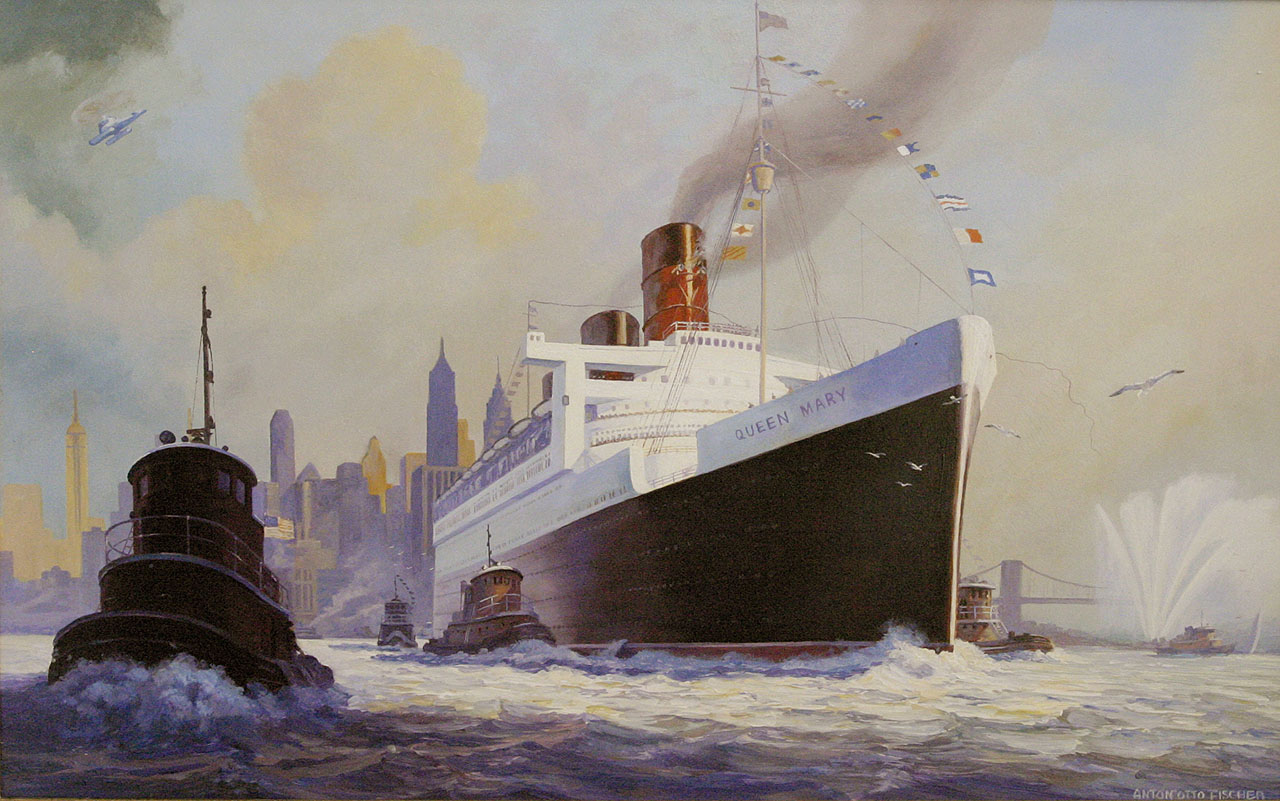QUEEN MARY HIGH
The RMS Queen Mary made her last transatlantic voyage in September, 1967. By then the ship had schlepped two million passengers nearly four million miles back and forth across the North Atlantic. As long as the Chrysler Building is tall and once the fastest ocean liner in the world, the fabled ship would become—what else?—a floating high school in Brooklyn—the HS Queen Mary. That, at least, was what the still-fresh administration of Mayor John V. Lindsay envisioned for the boat. Lindsay knew ships: he had rushed his studies at Yale to join the Navy at the start of World War II, serving as an officer on the destroyer USS Swanson.

In the spring of 1967, the inimitably-named chairman of the Cunard Steamship Company, Sir Basil Smallpiece, announced that the Queen Mary would be auctioned with a starting bid pegged to its scrap value of $1.82 million. In our present age of dwindling resources and lean economies, its seems incredibly wasteful to junk a ship barely 30 years old—half the age of our still-working B-52 bombers. But the ship was reportedly losing $2 million a year for Cunard, as the nascent airline industry cut deeply into the transatlantic travel trade.
Gotham had plenty of competition for the craft. Some 300 bids for the Queen Mary were received from around the world, along with hundreds more suggestions for repurposing the ship. An Australian investor proposed converting the vessel for the emergency transport of immigrants. An Atlanta, Georgia businessman sought to make the ship a traveling trade fair—a kind of mercantile Noah’s Ark upon which would be stowed “everything that’s manufactured in the U.S., if we can get it aboard.” By the end of July, Cunard had trimmed the list of prospective bidders down to 18. New York was still in the running.

However unorthodox a means of procuring a new city school, the idea was not as nutty as it seems. Converting the vessel into a “general comprehensive high school”—for 3,000 students from Williamsburg and Bedford Stuyvesant—was estimated to cost $3 million and take about 18 months. A conventional high school would require $10 million and at least four years to construct, assuming a suitable city-owned site could be found.
The New York Times called the floating school “Lindsay’s Ark,” praising plans for this “almost instant school.” Admitting there was “an ocean of difference between a luxury liner plowing the seas and a high school in Brooklyn,” turning the Queen Mary into a ship of learning was just the imaginative stroke needed to awaken “a far too conventional city and school bureaucracy.” “The tradition-bound planning of obsolete schoolhouses for the nation’s cities,” it opined, “must be replaced by functional and forward-looking buildings”—retrofitted ocean liners included.
But it was not to be. New York was outbid by the City of Long Beach, California, which wanted the ship for a maritime museum and hotel. Instead of deadheading an empty ship to Long Beach, Cunard sent it on a last-fling cruise—with 1,200 passengers “full equally of gaiety and champagne and nostalgia”—to the Canary Islands, Rio de Janeiro, around Cape Horn to Valparaiso and Lima and Acapulco and on up the California coast to San Pedro Bay. The last voyage, ironically, was hugely profitable.
The Queen Mary has been in Long Beach for nearly 50 years now, resting in an artificial lagoon at the mouth of the Los Angeles river, idled far longer than it cruised the high seas.
